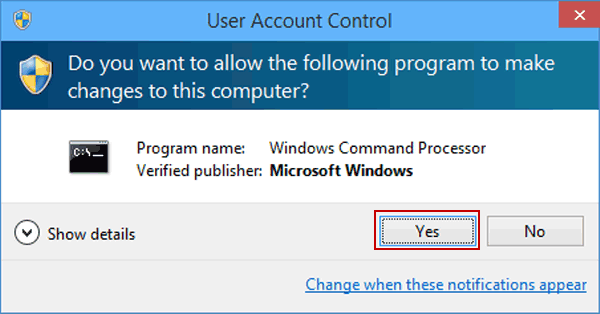


Same thing if you call it from a script already elevated to administrator.Ĥ) The window is kept at its current size and position, as it should be.ĥ) The current directory doesn't change after obtained administrative privileges. For example, if you call it from a control panel uninstallation entry, the RunAsAdmin function will not run unnecessarily because in that case you are already an administrator. If Env("CurrentDirectory") "" Then Shell.CurrentDirectory = Env("CurrentDirectory")ġ) The parameter injection is not possible.Ģ) The number of arguments does not change after the elevation to administrator and then you can check them before you elevate yourself.ģ) You know for real and immediately if the script runs as an administrator. If Shell.Run("%ComSpec% /C ""NET FILE""", 0, True) 0 ThenĮnv("CurrentDirectory") = Shell.CurrentDirectoryĪrgsList = ArgsList & """ """ & WScript.Arguments(i - 1)ĬreateObject("Shell.Application").ShellExecute WScript.FullName, """" & WScript.ScriptFullName & ArgsList & """",, "runas", 5
exeSet Shell = CreateObject("WScript.Shell") control save game steam If you add a new drive to your system. Designate the folder where you want to move them.This is the universal and best solution for this: If 1 Then WScript.Quit 1 Then you need to simply select the files and folders you want to transfer, right-click on them, and select Move to from the context menu. If you use our freeware Ultimate Windows Tweaker, you can easily add Move to (or Copy to) to your context menu. If you do not have access to an admin account, ask your administrator to do it.

If you need to move or transfer files from one user account to another, the simplest way would be to log in with an administrator account, and cut-paste the files from one user account to the personal folders of the other user account. Transfer files from one User Account to another Very easy once you have done it and it is valid for Windows 10,11 and MS Server 2019, here in User Account Control it is. Now you can activate the predefined admin account in the 'Administrator Properties' window or deactivate it again if necessary. If you need to do this, then this post will show you how to share or transfer files & folders between users on Windows 11/10/8/7.Ī user with an Administrator account can access files of all other users on his computer system. Now click Users, then right-click the predefined administrator account and select Properties. Or maybe you need to share files between the users. But there may be times when you may want to transfer files from one user account to another user account, on a Windows PC or laptop. Windows lets each user create, store and access his or her own files and folders under his User Account.


 0 kommentar(er)
0 kommentar(er)
